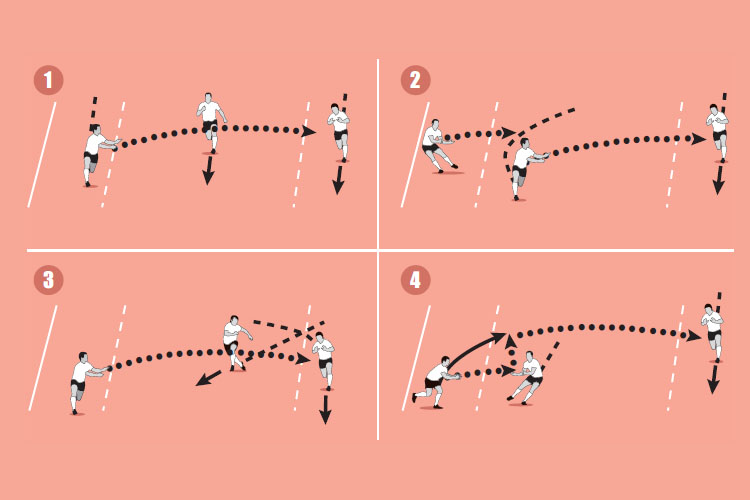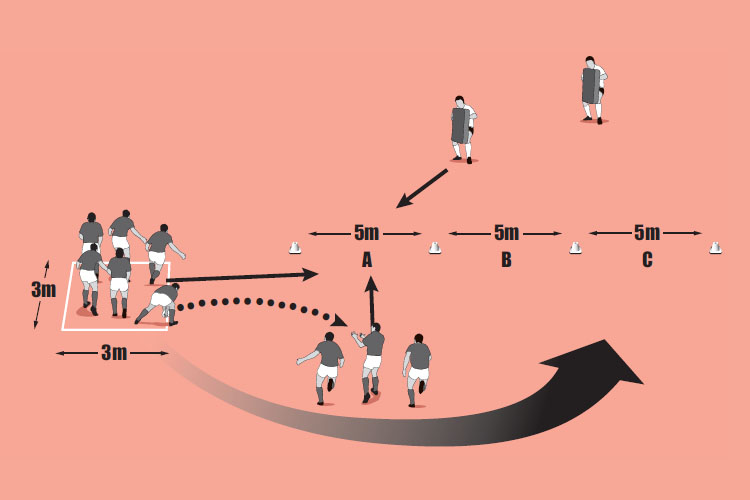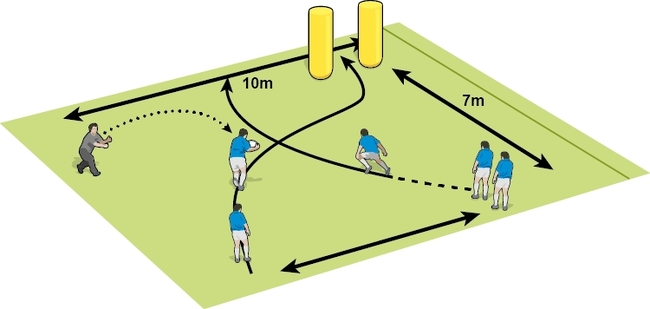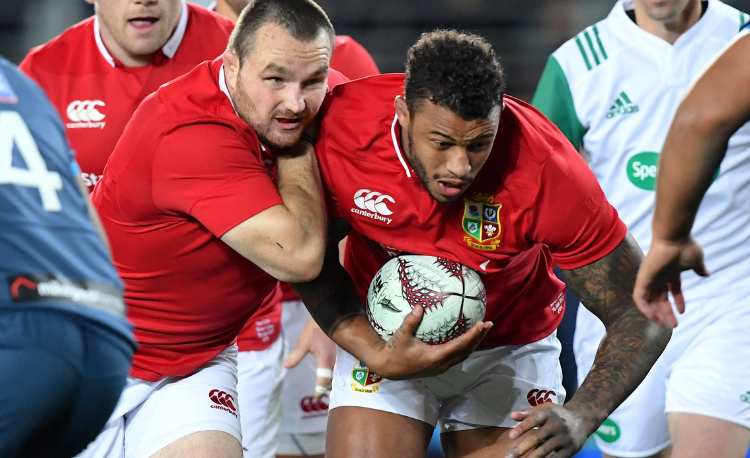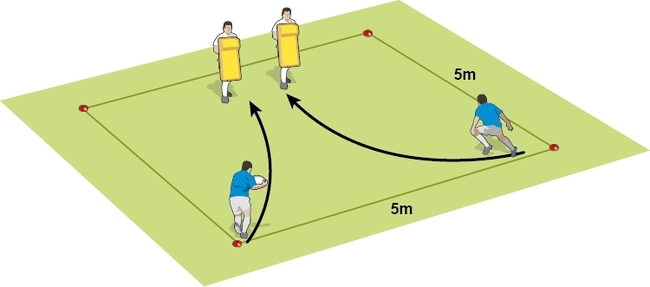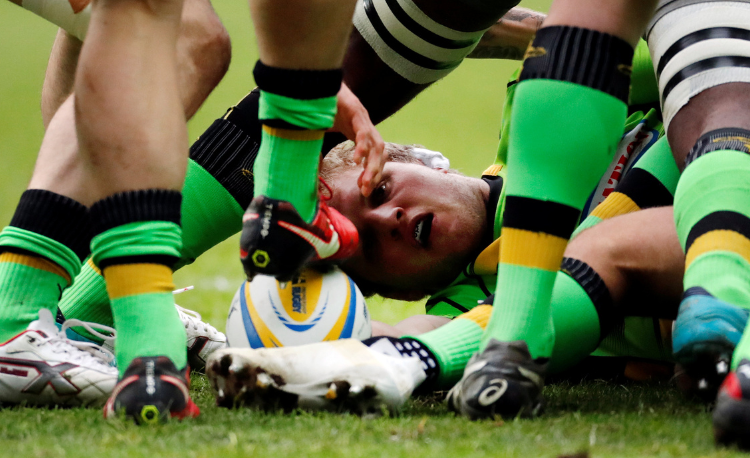Balance offload

Offloading the ball out of contact is one of the most powerful attacking weapons in the game. But an offload pass is often made when the ball carrier is off balance. This session gets the players passing in unusual circumstances and builds to a standard offload game situation. It also considers the role of the support player.
Warm up time: 7-10
Session time: 15-20
Development time: 10-15
Game time: 15-20
Warm down time: 7-10
What to think about
Passing with one or two hands?
One arm is often used in the contact situation to fend off a defender. Yet the supporting player may not be on the best side to take the pass. Therefore players should not only practise with one handed passes, but also with the “inside” hand. This means flicking the ball out of the back of the hand.
What footwork should the passer use?
The ball carrier will need to move the defender to prevent a full on tackle being made. They should not compromise their forward movement though. This momentum will take them beyond the tackler, allowing more chance for a cleaner offload.
set-up
- Pass by turning your shoulders toward the receiver and looking at the target.
- Pass upwards as you fall and follow through to the target with your hand or hands.
- Supporter: hold your run until you are sure of the pass.
What you get your players to do
Stand one player with a ball at the side of the box and in the middle of the 5 metre strip. Two players run toward the strip. The first receiver hops as he reaches the strip, receives the pass and passes before hopping out on the other side of the strip. Then change the hopping leg, sides and length of the pass, then have the players use one and two hands to pass. Finally let the first receiver see if they can leap through the strip, receiving and passing in mid air.
Thank you for reading
to enjoy 3 free articles,
our weekly newsletter, and a free coaching e-book
Or if you are already a subscriber, login for full access
Newsletter Sign Up
Coaches Testimonials

Gerald Kearney, Downtown Las Vegas Soccer Club

Paul Butler, Florida, USA

Rick Shields, Springboro, USA

Tony Green, Pierrefonds Titans, Quebec, Canada
Subscribe Today
Be a more effective, more successful rugby coach
In a recent survey 89% of subscribers said Rugby Coach Weekly makes them more confident, 91% said Rugby Coach Weekly makes them a more effective coach and 93% said Rugby Coach Weekly makes them more inspired.
Get Weekly Inspiration
All the latest techniques and approaches
Rugby Coach Weekly offers proven and easy to use rugby drills, coaching sessions, practice plans, small-sided games, warm-ups, training tips and advice.
We've been at the cutting edge of rugby coaching since we launched in 2005, creating resources for the grassroots youth coach, following best practice from around the world and insights from the professional game.





